Ansible:
Configuration、Command and Control
是什么 ? SSH-based configuration management, deployment, and task execution system
运维工具的分类:
agent:基于专用的agent程序完成管理功能,puppet, func, zabbix, ...
agentless:基于ssh服务完成管理,ansible, fabric, ...
架构:
Ansible Core
Modules:
Core Modules
Customed Modules
Host Iventory
Files
CMDB
PlayBooks
Hosts
roles
Connection Plugins:
特性:
模块化:调用特定的模块,完成特定的任务;
基于Python语言研发,由Paramiko, PyYAML和Jinja2三个核心库实现;
部署简单:agentless;
支持自定义模块,使用任意编程语言;
强大的playbook机制;
幂等性;
安装及程序环境:
程序:
ansible
ansible-playbook
ansible-doc
配置文件:
/etc/ansible/ansible.cfg
主机清单:
/etc/ansible/hosts
插件目录:
/usr/share/ansible_plugins/
基本使用入门:
ansible命令:
Usage: ansible <host-pattern> [options]
常用选项:
-m MOD_NAME -a MOD_ARGS
配置Host Inventory:
/etc/ansible/hosts
[group_id]
HOST_PATTERN1
HOST_PATTERN2
模块:
获取模块列表:ansible-doc -l
获取指定模块的使用帮助:ansible-doc -s MOD_NAME


常用模块:
ping:探测目标主机是否存活;
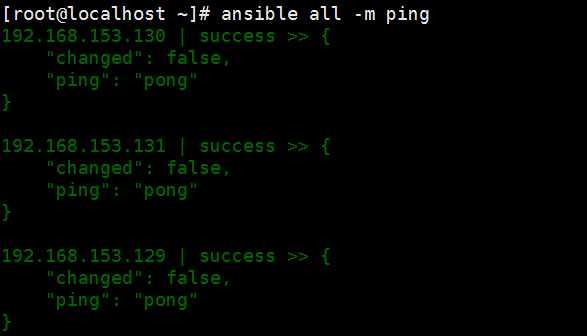
command:在远程主机执行命令;
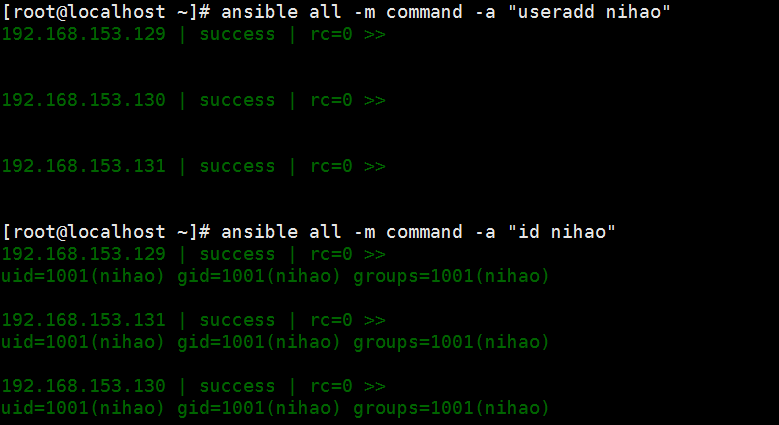
shell:在远程主机上调用shell解释器运行命令,支持shell的各种功能,例如管道等 ;
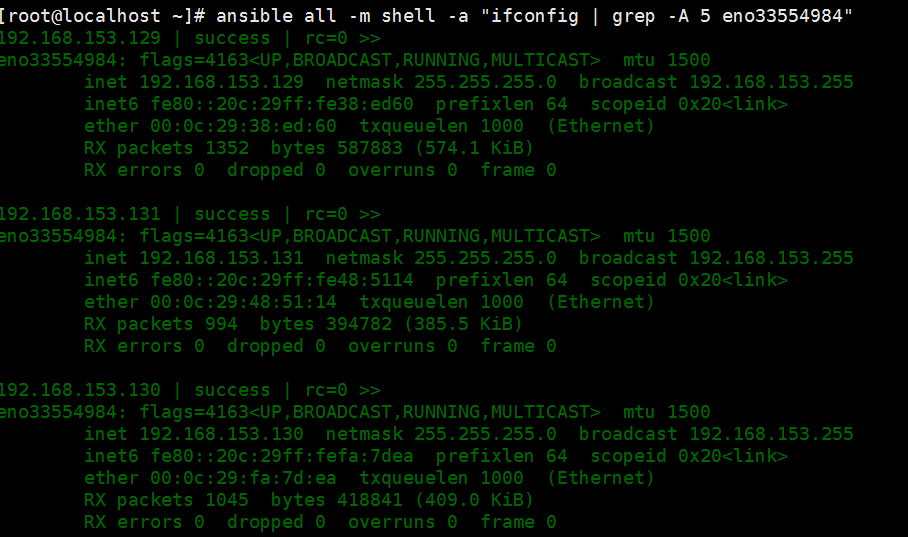
注意:command和shell模块的核心参数直接为命令本身;而其它模块的参数通常为“key=value”格式;
copy: Copies files to remote locations .
用法:
(1) 复制文件
-a "src= dest= "
(2) 给定内容生成文件
-a "content= dest= "
其它参数:mode, owner, group, ...


file:Sets attributes of files
用法:
(1) 创建目录:
-a "path= state=directory"
(2) 创建链接文件:
-a "path= src= state=link"
(3) 删除文件:
-a "path= state=absent“


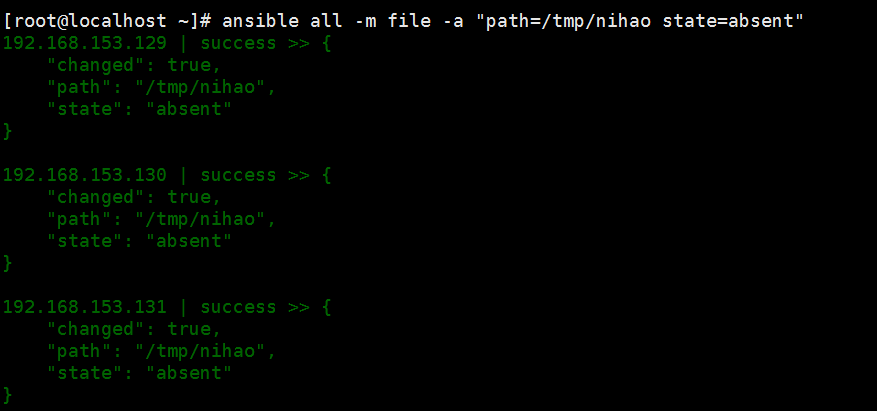

fetch:Fetches a file from remote nodes

cron:Manage cron.d and crontab entries .
-a ""minute=
hour=
day=
month=
weekday=
job=
name=
user=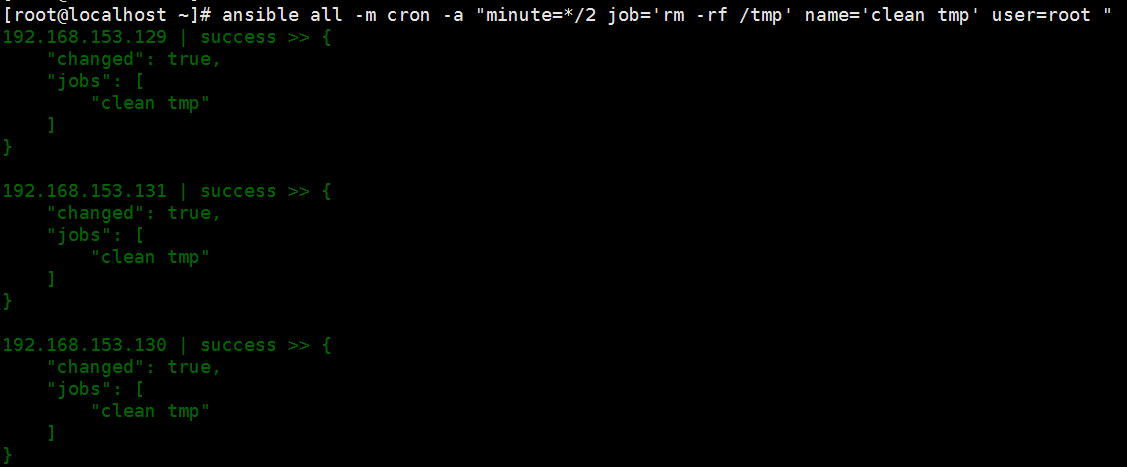

state={present|absent}


hostname:Manage hostname
name=yum:Manages packages with the I(yum) package manager
-a ""(1) name= state={present|latest}
(2) name= state=absent
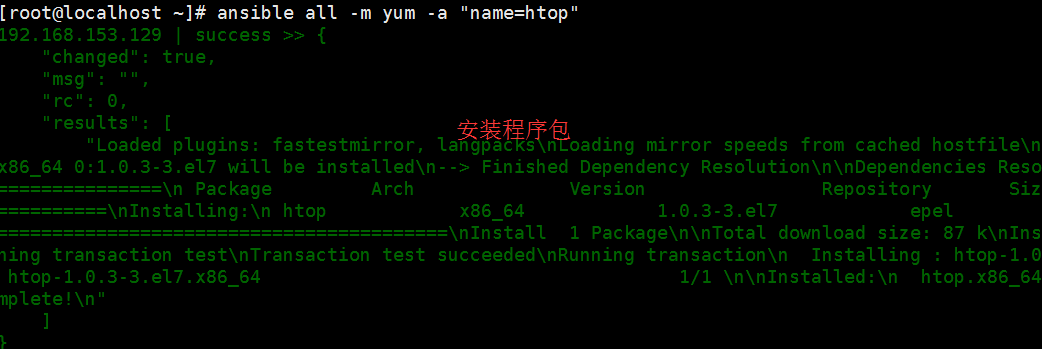
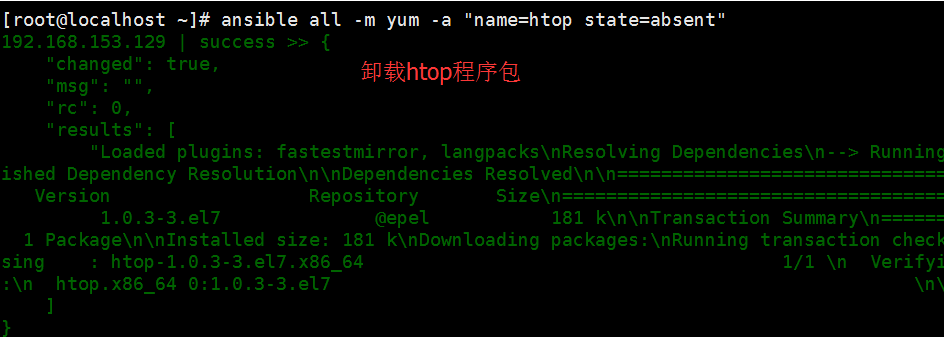
service:Manage services.
-a ""name=
state=
started
stopped
restarted
enabled=
runlevel=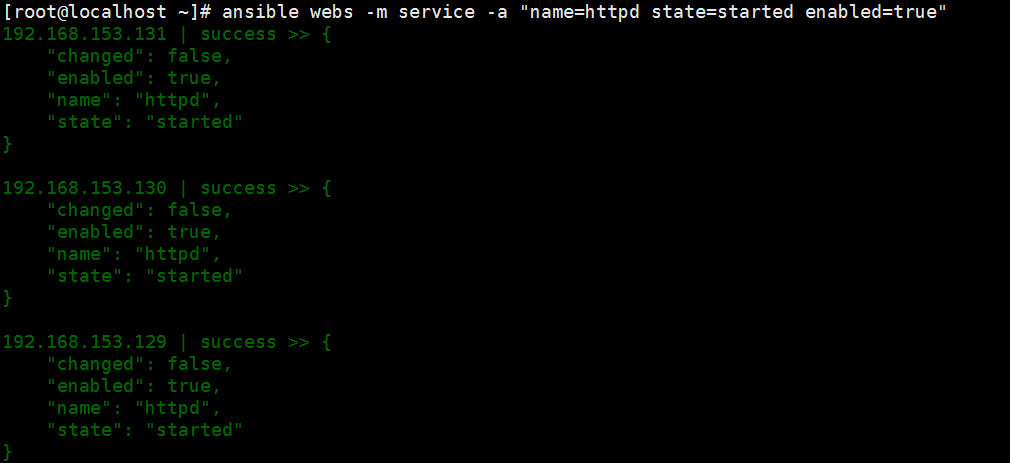
group: Add or remove groups
-a ""name=
state=
system=
gid=

user:Manage user accounts
-a ""name=
group=
groups=
comment=
uid=
system=
shell=
expires=
home=
setup:Gathers facts about remote hosts
YAML:
YAML is a data serialization format designed for human readability and interaction with scripting languages.

数据结构:
key:value
- item1
- item2
- item3
{name:jerry, age:21}
PlayBook:
核心元素:
Tasks:任务,由模块定义的操作的列表;
Variables:变量
Templates:模板,即使用了模板语法的文本文件;
Handlers:由特定条件触发的Tasks;
Roles:角色;
playbook的基础组件:
Hosts:运行指定任务的目标主机;
remote_user:在远程主机以哪个用户身份执行;
sudo_user:非管理员需要拥有sudo权限;
tasks:任务列表
模块,模块参数:
格式:
(1) action: module arguments
(2) module: arguments

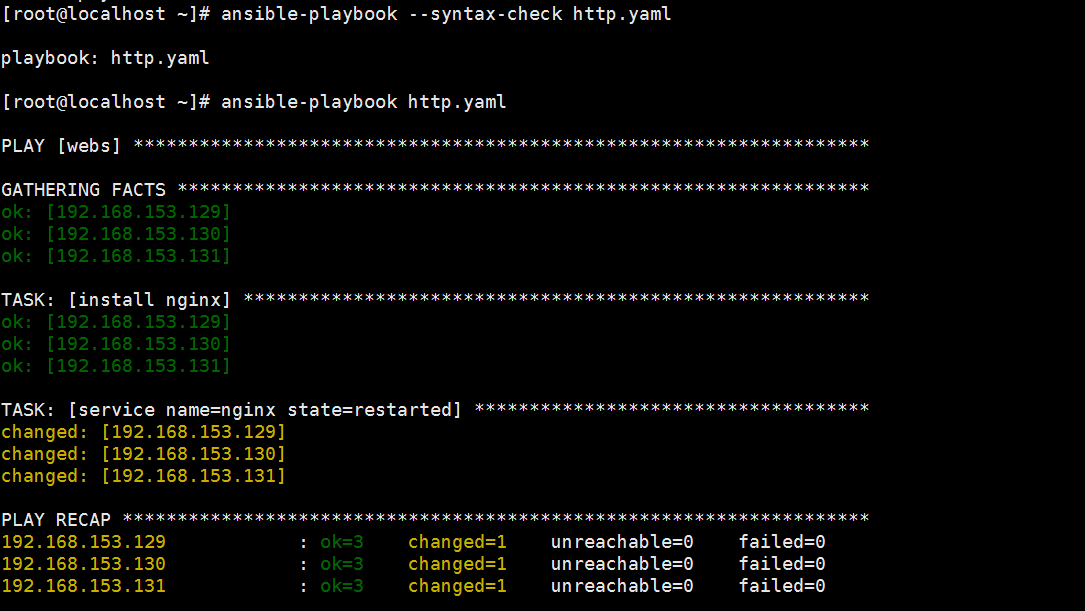
示例1:
- hosts: all
remote_user: root
tasks:
- name: install a group
group: name=mygrp system=true
- name: install a user
user: name=user1 group=mygrp system=true
- hosts: websrvs
remote_user: root
tasks:
- name: install httpd package
yum: name=httpd
- name: start httpd service
service: name=httpd state=started运行playbook,使用ansible-playbook命令
(1) 检测语法
ansible-playbook --syntax-check /path/to/playbook.yaml(2) 测试运行
ansible-playbook -C /path/to/playbook.yaml
--list-hosts
--list-tasks
--list-tags(3) 运行
ansible-playbook /path/to/playbook.yaml
-t TAGS, --tags=TAGS
--skip-tags=SKIP_TAGS
--start-at-task=START_AT

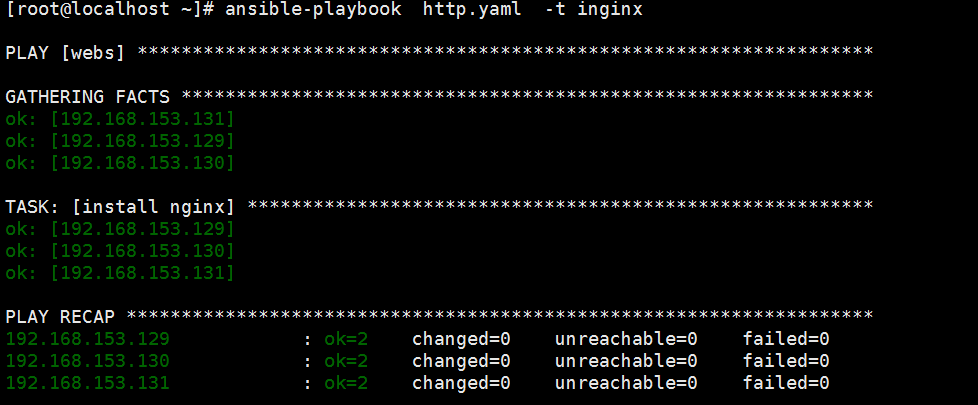
handlers:由特定条件触发的Tasks;
调用及定义方式:
tasks:
- name: TASK_NAME
module: arguments
notify: HANDLER_NAME
handlers:
- name: HANDLER_NAME
module: arguments
示例:
- hosts: websrvs
remote_user: root
tasks:
- name: install httpd package
yum: name=httpd state=latest
- name: install conf file
copy: src=/root/httpd.conf dest=/etc/httpd/conf/httpd.conf
notify: restart httpd service
- name: start httpd service
service: name=httpd state=started
handlers:
- name: restart httpd service
service: name=httpd state=restarted
tags:给指定的任务定义一个调用标识;
- name: NAME
module: arguments
tags: TAG_ID
Variables:
类型:
内建:
(1) facts
自定义:
(1) 命令行传递;
-e VAR=VALUE


(2) 在hosts Inventory中为每个主机定义专用变量值;
(a) 向不同的主机传递不同的变量 ;
IP/HOSTNAME variable_name=value

(b) 向组内的所有主机传递相同的变量 ;
[groupname:vars]
variable_name=value

(3) 在playbook中定义
vars:
- var_name: value
- var_name: value
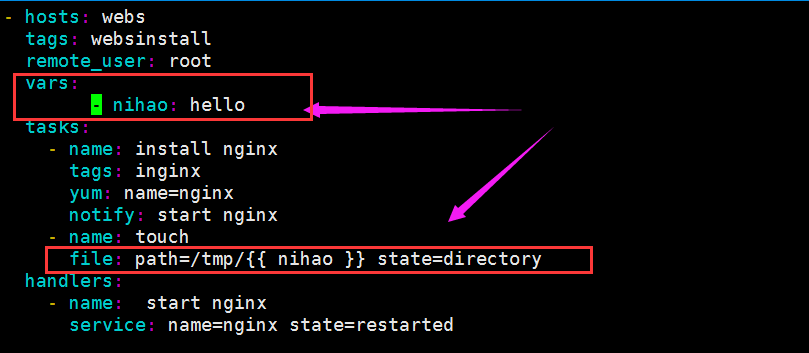
(4) Inventory还可以使用参数:
用于定义ansible远程连接目标主机时使用的属性,而非传递给playbook的变量;
ansible_ssh_host
ansible_ssh_port
ansible_ssh_user
ansible_ssh_pass
ansible_sudo_pass
...

(5) 在角色调用时传递
roles:
- { role: ROLE_NAME, var: value, ...}
变量调用:
{{ var_name }}
Templates:模板
文本文件,内部嵌套有模板语言脚本(使用模板语言编写)
Jinja2 is a template engine written in pure Python. It provides a Django inspired non-XML syntax but supports inline expressions and an optional sandboxed environment.
语法:
字面量:
字符串:使用单引号或双引号;
数字:整数、浮点数;
列表:[item1, item2, ...]
元组:(item1, item2, ...)
字典:{key1:value1, key2:value2, ...}
布尔型:true/false
算术运算:
+, -, *, /, //, %, **
比较操作:
==, !=, >, <, >=, <=
逻辑运算:and, or, not
执行模板文件中的脚本,并生成结果数据流,需要使用template模块;
template:
-a ""
src=
dest=
mode=
onwer=
group=注意:此模板不能在命令行使用,而只能用于playbook;



示例:
- hosts: ngxsrvs
remote_user: root
tasks:
- name: install nginx package
yum: name=nginx state=latest
- name: install conf file
template: src=/root/nginx.conf.j2 dest=/etc/nginx/nginx.conf
tags: ngxconf
notify: reload nginx service
- name: start nginx service
service: name=nginx state=started enabled=true
handlers:
- name: reload nginx service
shell: /usr/sbin/nginx -s reload条件测试:
when语句:在tasks中使用,Jinja2的语法格式;
- hosts: all
remote_user: root
tasks:
- name: install nginx package
yum: name=nginx state=latest
- name: start nginx service on CentOS6
shell: service nginx start
when: ansible_distribution == "CentOS" and ansible_distribution_major_version == "6"
- name: start nginx service
shell: systemctl start nginx.service
when: ansible_distribution == "CentOS" and ansible_distribution_major_version == "7"
循环:迭代,需要重复执行的任务;
对迭代项的引用,固定变量名为"item”,使用with_item属性给定要迭代的元素;
元素:列表
字符串
字典
基于字符串列表给出元素示例:
-hosts: websrvs
remote_user: root
tasks:
- name: install packages
yum: name={{ item }} state=latest
with_items:
- httpd
- php
- php-mysql
- php-mbstring
- php-gd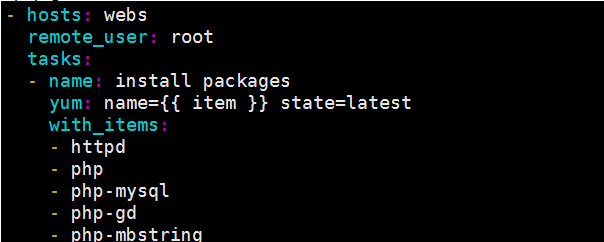
基于字典列表给元素示例:
- hosts: all
remote_user: root
tasks:
- name: create groups
group: name={{ item }} state=present
with_items:
- groupx1
- groupx2
- groupx3
- name: create users
user: name={{ item.name }} group={{ item.group }} state=present
with_items:
- {name: 'userx1', group: 'groupx1'}
- {name: 'userx2', group: 'groupx2'}
- {name: 'userx3', group: 'groupx3'}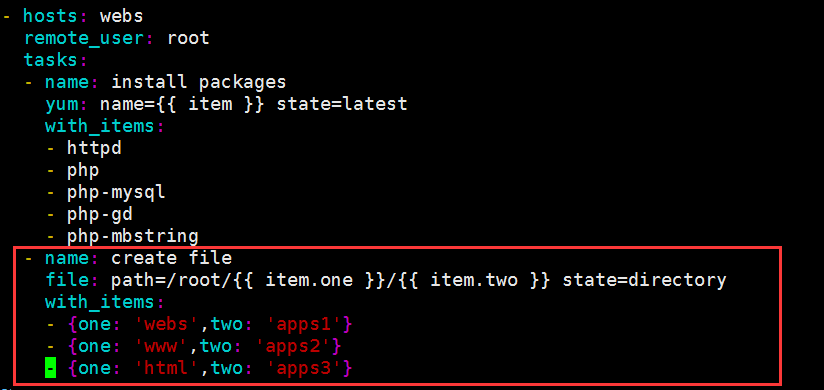
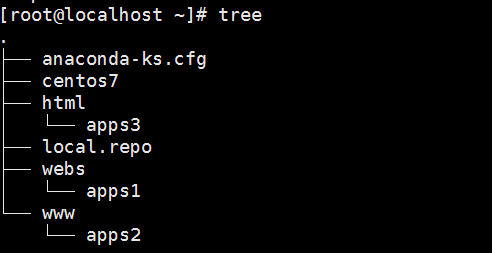
角色:roles
以特定的层级目录结构进行组织的tasks、variables、handlers、templates、files等;
role_name/
files/:存储由copy或script等模块调用的文件;
tasks/:此目录中至少应该有一个名为main.yml的文件,用于定义各task;其它的文件需要由main.yml进行“包含”调用;
handlers/:此目录中至少应该有一个名为main.yml的文件,用于定义各handler;其它的文件需要由main.yml进行“包含”调用;
vars/:此目录中至少应该有一个名为main.yml的文件,用于定义各variable;其它的文件需要由main.yml进行“包含”调用;
templates/:存储由template模块调用的模板文本;
meta/:此目录中至少应该有一个名为main.yml的文件,定义当前角色的特殊设定及其依赖关系;其它的文件需要由main.yml进行“包含”调用;
default/:此目录中至少应该有一个名为main.yml的文件,用于设定默认变量;
在playbook中调用角色的方法:
- hosts: HOSTS
remote_user: USERNAME
roles:
- ROLE1
- ROLE2
- { role: ROLE3, VARIABLE: VALUE, ...}
- { role: ROLE4, when: CONDITION }